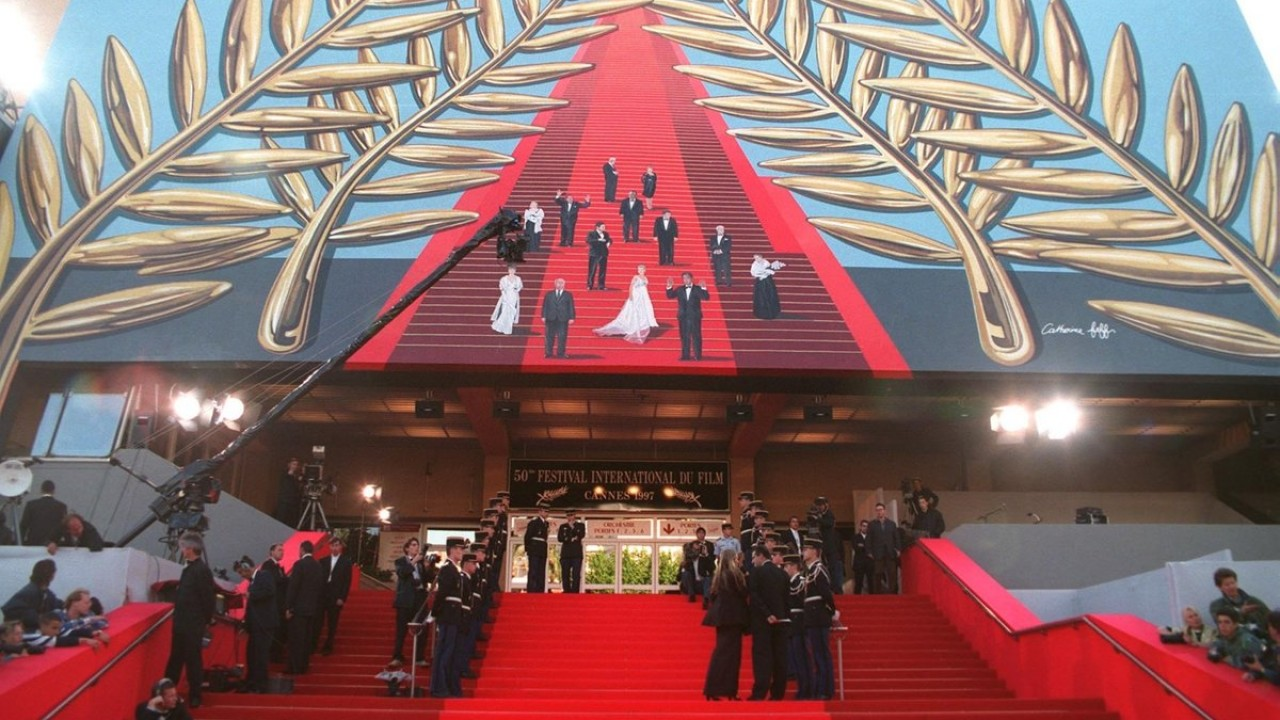Since 1946, Indian movies have been shining at the Cannes Film Festival. It all started when the film Neecha Nagar won the top prize at the very first festival. Then, in 1955, little actress Baby Naaz was specially recognized for her amazing work in Boot Polish.
The next year, 1956, Satyajit Ray’s Pather Panchali won an award for its beautiful storytelling about real life, and another film, Gotoma the Buddha by Rajbans Khanna, was also praised for great directing. In 1983, Mrinal Sen’s Kharij won the Jury Prize. Then, in 1988, Mira Nair’s Salaam Bombay! won the Golden Camera award. The next year, Shaji N. Karun’s Piravi got a special mention for the same prize. Later in 1999, Murali Nair’s Marana Simhasanam also won the Golden Camera award.
To celebrate 100 years of Indian movies, India was the Official Guest Country at the 66th Cannes Festival. During this special time, the “Incredible India Exhibition” was started by India’s Ministry of Tourism and Ministry of Information and Broadcasting, and famous actor Chiranjeevi officially opened it.
Indian cinema’s journey at Cannes shows how much talent and heart our films have shared with the world!
Special Events and Honors for Indian Cinema at Cannes
Cannes Classics has included Satyajit Ray’s famous works of Pather Panchali, Charulata and Pratidwandi to highlight his achievements. In 1982, the event’s organizers made a special tribute and presented him with a special award.
Movies made in many countries have been shown as part of the “Tous Les Cinemas du Monde” program since 2005. Numerous Indian films were shown at the event during the year 2007 and among them were Lage Raho Munna Bhai and Guru.
In the year 2013, India was selected by Cannes to be its Official Guest Country. A number of films, such as The Lunchbox and Bombay Talkies, were featured in screenings that emphasized the diversity in Indian cinema.
India was accorded the Country of Honor title at the Cannes Film Market in 2022, as this was the 75th year of friendship between India and France. Many Indian movies were screened on the beach and a special lab was set up to preview new films. That year, the India—Content Hub of the World pavilion welcomed visitors to highlight Indian storytelling.
Neecha Nagar (1946)
Directed by Chetan Anand, it is a famous Indian movie and the first to win the top prize at the Cannes Film Festival. The story shows the gap between rich and poor through two towns, Neecha Nagar (Low City) and Ooncha Nagar (High City).
A greedy businessman named Sarkar sends dirty sewage to the poor town, causing illness and trouble. He then builds a hospital to make money from their pain. The people of Neecha Nagar come together to fight against him.
This film also introduced the famous musician Pandit Ravi Shankar as a composer. Though it was loved worldwide, it wasn’t shown in India at first. Today, Neecha Nagar is remembered for its strong message about fairness and justice.
Boot Polish (1954)
The film was made by Prakash Arora and produced by Raj Kapoor and it is a heartwarming movie from India. The two main characters, Bhola and Belu, are street kids who work as shoeshine men to get by.
She is tough but really cares for them and wants them to be truthful. However, life as a homeless boy is very hard and at times Bhola feels he must steal in order to survive.
Even though the movie shows how tough everyday life can be, it also stresses the value of being proud and genuine. Thanks to great performances and nice tunes, Boot Polish encourages us to keep going and act wisely, even when things seem tough.
Pather Panchali (1955)
Directed by Satyajit Ray, it tells a story of a poor family living in a small Indian village in Bengal. It follows Apu and Durga, siblings who deal with happiness and struggles in life.
It takes into account their daily routine, both the happy parts and the painful and their hopes even as they are affected by poverty and loss. This anime is famous for how it relates stories in a heartfelt and straightforward way. Pather Panchali is the opening story of the Apu Trilogy and helped introduce Indian movies to the world. It shows that difficult circumstances can still contain beauty.
Gotoma The Buddha (2008)
Is a movie about the life of Siddhartha Gautama, who became the Buddha. It shows how he started as a prince with a comfortable life but left it all to find the meaning of life and how to stop suffering.
The film follows his hard times, meditation, and finally his awakening under the Bodhi tree. It shares his lessons about peace, kindness, and understanding. The movie helps us learn about Buddhism and how important it is to find calm inside ourselves. With gentle storytelling, Gotoma the Buddha inspires us to be kind and wise in our lives.
Kharij (1982)
Is a memorable movie made by Mrinal Sen. The play describes a middle-class family whose young servant dies while in their house. This then leads the family to feel sorry and perplexed. They are able to see the big differences in how rich and poor people live.
It shows the family’s efforts to deal with these problems and seek the right solutions. It deals with real issues such as injustice and how poverty affects people. The actors gave compelling performances and every scene feels believable. Kharij inspires us to look at our relationships and decide what is fair and just. It sensitively brings up major topics about family and society.
Salaam Bombay! (1988)
The movie is an emotional work by Mira Nair dealing with Mumbai’s street kids. It shows Krishna, a young boy who flees home and tries to survive in the streets. The story brings out the difficult situations, camaraderie and dreams these children have. It looks at poverty, child labor and crime from a genuine perspective. Salaam Bombay! was praised and loved because it showed the real lives of the poor children in Mumbai.
Piravi (1989)
By Shaji N. Karun is a sad and beautiful story about a father looking for his missing son during troubled times in Kerala. The movie shows deep feelings of pain and loss when families face violence and uncertainty. With poetic pictures and strong emotions, it makes you feel the heartbreak of not knowing what happened to a loved one.
Marana Simhasanam (1999)
Directed by Murali Nair, is a darkly funny story about a poor man wrongly sentenced to death in a village. The movie talks about unfair laws and how poor people suffer because of them. It uses simple storytelling and humor to show big social problems. The film won a special prize at Cannes for its unique style.
Charulata (1964)
By Satyajit Ray, this is a story about a woman left alone in old Bengal. Charulata feels stuck in her life and enjoys a close friendship with her husband’s cousin. The movie depicts her feelings, ambitions and wish to be set free. Many people love Ray so much because it examines love and marriage with a gentle and heartfelt touch.
Pratidwandi (1970)
It Is Also by Satyajit Ray which focuses on Siddhartha, a young person looking for employment as political troubles grow in Kolkata. The film displays how difficult life is for jobless youths who are under a great deal of pressure. This poem presents the experience of city life and confusion through tried-and-tested methods of writing.
Lage Raho Munna Bhai (2006)
Guided by Rajkumar Hirani, the film is about Munna, a friendly gangster who starts noticing Mahatma Gandhi’s presence after his death. Encouraged by Gandhi’s gentle approach, Munna chooses kindness and truth to deal with issues he faces. It was a comedy and drama all at once and its original outlook made the movie a big success.
Guru (2007)
By Mani Ratnam, it tells the story of a man who rises from a small village to become a big businessman in India. It shows his struggles, dreams, and the tough choices he makes along the way. The film is about ambition, hard work, and the price of success, with great acting and style.
The Lunchbox (2013)
Directed by Ritesh Batra, is a sweet love story about two lonely people in Mumbai. A lunchbox meant for someone else connects a housewife and a widower through letters. The movie gently explores loneliness, hope, and friendship in a busy city. It won many hearts worldwide for its simple and warm story.
Bombay Talkies (2013)
Is a special movie made of four short stories by different directors. It celebrates 100 years of Indian movies and shows how Bollywood affects people’s lives. The stories talk about dreams, identity, and the magic of movies. It’s a loving tribute to Indian cinema’s power and diversity.






